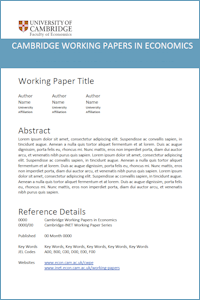
Simshauser, P., Newbery, D.
Non-Firm vs. Priority Access: on the Long Run Average and Marginal Cost of Renewables in Australia
CWPE2363
Abstract: In Australia’s National Electricity Market (NEM), 170+ renewable and battery storage projects reached financial close from 2016-2022, totalling 24GW and $46 billion. With an investment supercycle, not all projects arrive smoothly. Some investors experienced entry frictions from system strength constraints, adverse movements in Marginal Loss Factors and network congestion. Whether these outcomes – which impacted ~20% of entrants – represented workable results in a properly functioning market due to investment error, or arose because of market design defects requiring policy attention, is an open question. An issue that NEM policy advisors are seeking to reform is the non-firm, open access regime. Policy focus is warranted. The ratio of maximum to average wind output is ~3x while solar PV is 4x. Consequently as renewable market share increases, rising levels of curtailment are predictable through excess generation and negative price events, network congestion, or both. But care must be taken with access reform because well-intended ‘intuitive policy prescriptions’ can produce the exact opposite effects by constraining REZ asset productivity, compounding complexity and slow renewable entry rates – the critical variable being the difference between average and marginal curtailment rates. Malalignment between access policy and over-the-counter forward market conventions may distort entry, raise consumer prices and harm welfare.
Keywords: Renewables, Network Congestion, Curtailment, Marginal Curtailment, Renewable Energy Zones
JEL Codes: D52 D53 G12 L94 Q40
Author links: David Newbery
PDF: https://www.econ.cam.ac.uk/research-files/repec/cam/pdf/cwpe2363.pdf 
EPRG Paper Link: 2322
Open Access Link: https://doi.org/10.17863/CAM.105492
